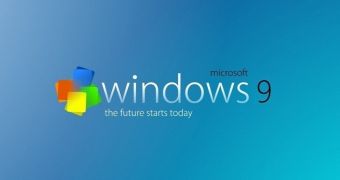We’ve already heard that Windows 9 could come without a desktop in some versions, but a new report claims that this change is “very likely” to happen in builds aimed at ARM tablets.
This means that tablets such as Microsoft’s very own Surface RT and Surface 2 could only boast the Modern UI and no desktop, as the software giant thinks that it would make much more sense for such tablets to stick to the touch-optimized UI.
Myce.com is reporting via unconfirmed sources that it’s not yet clear whether Microsoft is looking to remove the desktop on all RT devices or only on specific models, but there’s no doubt that the company is looking to make some changes in this regard, especially because previous reports also suggested that such a tweak was possible.
As we know, Windows RT and Windows RT 8.1 both shipped with a Modern UI and the desktop, as part of Microsoft’s attempts to offer the best of two different worlds. Microsoft said from the very beginning that a Surface tablet could replace your laptop, and offering the familiar desktop was undoubtedly the only way to convince potential buyers that such a statement is true.
The biggest problem with the desktop removal in Windows 9 is the freeware Office 2013 productivity suite that’s pre-installed on all RT devices. At this point, all those who purchase a Windows RT tablet get a free copy of Office 2013, which can only be accessed from the desktop.
In order to make such a change possible, Microsoft is working on a touch-optimized version of Office that could be rolled out by the end of this year and pre-installed on all RT devices running Windows 9. This way, the company could still provide users with this powerful document editing solution at absolutely no cost and, at the same time, get the desktop out of the operating system.
This is clearly an ambitious change, but Microsoft has already started work on a touch-optimized version of Office, and according to sources, it could be launched in the coming months. This means that in April 2015, when Windows 9 should see daylight, Office 2013 will already be available to users. A Windows RT tablet however would bring it free of charge to buyers.
Another big setback of Windows RT tablets offering a desktop is the small display which makes it very hard to work with applications just like we do it on a laptop, for example. The desktop doesn’t make so much sense on a 10.6-inch screen, so this is also one of the reasons Microsoft is looking to put the focus on Metro.
Of course, Windows 9 will also bring quite a lot of improvements for the touch-optimized UI, with some people calling it Metro 2.0 thanks to the amount of changes that Microsoft is preparing. One possible enhancement is the addition of interactive live tiles which would basically provide users with even more information, such as mail contents and multimedia playback controls, right on the Start screen.

 14 DAY TRIAL //
14 DAY TRIAL //